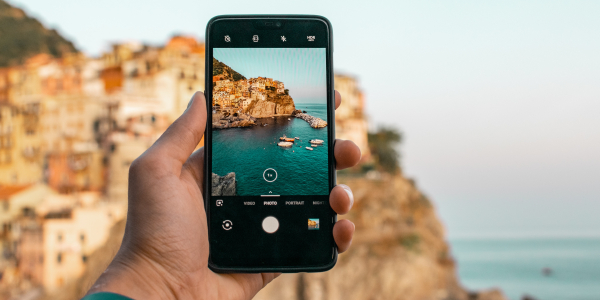Resizing vs Cropping
Before you attempt to alter any of your photos, it's important to understand the difference between resizing and cropping.
Resizing changes the size of an image, but allows it to keep the same shape and height to width ratio. For example, if you resize a rectangle-shaped image to make it smaller, you will still have a rectangle with the same ratio, not a square. It is the exact same photo you started with, except smaller.
Cropping removes portions of the image and can change the size, shape, and height to width ratio. Keep in mind that if you crop an image, you won't be able to enlarge it without losing some of the photo's quality, causing it to look fuzzy or pixelated. Very rarely will you ever need to crop a photo you want to use on an Arts & Sciences website. Because our web theme automatically crops a photo when it is displayed, we recommend you upload the photo as-is to see what it looks like before you try to alter it. It's also very important to make a duplicate of your photo so you still have a copy of the original. Once you crop a photo, it can't be undone.
Web Resizer
Web Resizer is a free online tool for resizing, cropping, and optimizing images for the web. Because you upload your image to the tool, you don't need to download any special software. Since it is a web application, you can use it with a PC or Mac.
- Go to the Web Resizer site.
- Upload your image using the 'upload image' button.
- To resize, change the number of pixels in the 'new size' text box.
- To crop, click the 'crop image' link.
- After making your changes, click the 'apply changes' button and then click 'download this image.'
Default Mac Image Editors
There are two ways to edit photos on a Mac using the default features. If you have a Mac and just need a simple and free way to resize or crop photos, Preview is a great option.
Preview:
- Right-click on a photo on your desktop.
- Choose 'open with' and then select the 'preview.app' option.
- This will open up the Preview toolbar at the top of your screen. From there, you can choose the Tools option to resize your photo or just click on the photo and use your mouse to select the area you would like to crop
Photos image editor:
- Open the photo application.
- Double click on the photo you want to edit.
- Choose the 'edit' option in the right top corner of your app window.
Default Microsoft Photo Editors
What photo editors are available and what steps you need to take will be determined by what version of Windows is on your computer.
Photos App:
- Double-click the image file you want to resize to open it in Photos.
- Once it's opened, click the three dots in the top right corner, then click 'resize'.
- A small pop-up will appear, offering you three preset sizes for the picture. Pick one of them or click 'define custom dimensions' at the bottom.
- After you have set your new dimensions, click 'save resized copy'.
Microsoft Paint:
- Open up the paint app.
- Open the photo you want to resize by clicking "File," then "Open," and selecting the image from your computer's files.
- In the top menu bar's "Home" tab, click "Resize." The "Resize and Skew" window should appear.
- Enter the desired image size. You can set the size by percentage or click "Pixels" and enter the exact dimensions you want. As long as you keep "maintain aspect ratio" checked, you only need to specify the horizontal or vertical dimension, and the other dimension will be set automatically.
- Click OK and then save the new version of your image by clicking 'file' and then 'save as'.
GIMP
GIMP is a free open-source image editing application similar to Adobe Photoshop and can be downloaded to a PC or Mac. GIMP has more features than Web Resizer and allows you to create artwork and also has graphic design elements.
Adobe Photoshop
Adobe Photoshop is a commercial image editing software and requires a license to download. It also has a simpler less expensive version called Photoshop Elements. If you have questions about licensing, please contact your department support rep. If you just need an easy way to quickly resize and crop photos, you probably don't need Photoshop.

